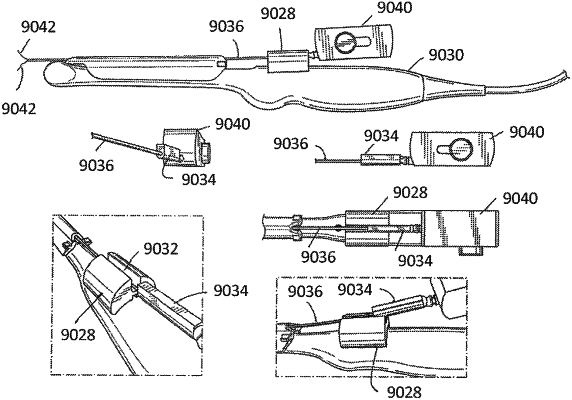| CPC A61B 18/1485 (2013.01) [A61B 8/0841 (2013.01); A61B 8/085 (2013.01); A61B 8/12 (2013.01); A61B 18/1482 (2013.01); A61F 6/20 (2013.01); A61B 8/4427 (2013.01); A61B 8/4433 (2013.01); A61B 2017/00278 (2013.01); A61B 2017/003 (2013.01); A61B 2017/00455 (2013.01); A61B 17/22004 (2013.01); A61B 2017/3405 (2013.01); A61B 2017/3413 (2013.01); A61B 17/42 (2013.01); A61B 2017/4233 (2013.01); A61B 2018/00196 (2013.01); A61B 2018/00273 (2013.01); A61B 2018/00285 (2013.01); A61B 2018/00291 (2013.01); A61B 2018/00559 (2013.01); A61B 2018/00577 (2013.01); A61B 2018/00589 (2013.01); A61B 2018/00595 (2013.01); A61B 2018/00642 (2013.01); A61B 2018/00702 (2013.01); A61B 2018/0072 (2013.01); A61B 2018/00726 (2013.01); A61B 2018/00732 (2013.01); A61B 2018/00744 (2013.01); A61B 2018/00767 (2013.01); A61B 2018/00791 (2013.01); A61B 2018/00875 (2013.01); A61B 2018/00982 (2013.01); A61B 2018/0293 (2013.01); A61B 2018/048 (2013.01); A61B 18/06 (2013.01); A61B 18/1206 (2013.01); A61B 2018/143 (2013.01); A61B 2018/1432 (2013.01); A61B 2018/1475 (2013.01); A61B 18/16 (2013.01); A61B 18/22 (2013.01); A61B 2090/378 (2016.02); A61B 2090/3925 (2016.02); A61B 2090/3966 (2016.02); A61N 2007/0043 (2013.01); A61N 7/02 (2013.01); A61N 7/022 (2013.01)] | 19 Claims |

|
1. A system for performing an ovarian procedure, the system comprising:
a docking device having a proximal region comprising a deployment feature, a distal region configured to penetrate an ovary, an elongated body having a lumen, and an alignment element at the proximal region;
a therapeutic element slidably disposed within the lumen of the docking device and configured to be deployed from the lumen of the docking device within the ovary upon actuation of the deployment feature, the therapeutic element comprising an electrode configured to emit radiofrequency energy to ablate ovarian tissue from within the ovary;
a sensor disposed on the therapeutic element and configured to measure temperature of the ovarian tissue;
an adapter configured to be removably coupled to an ultrasound probe, the adapter comprising a receiving alignment channel having a geometry that allows engagement with the alignment element in a manner that maintains planar orientation and limits rotation of the docking device and therapeutic element relative to the ultrasound probe; and
a computing device having a processor configured to:
cause the electrode to emit radiofrequency energy within the ovary up to a maximum power of 10 Watts to achieve up to a maximum temperature of 100° C.; and
execute a feedback control loop to dynamically modify a parameter of energy emission if the measured temperature received from the sensor exceeds the maximum temperature.
|